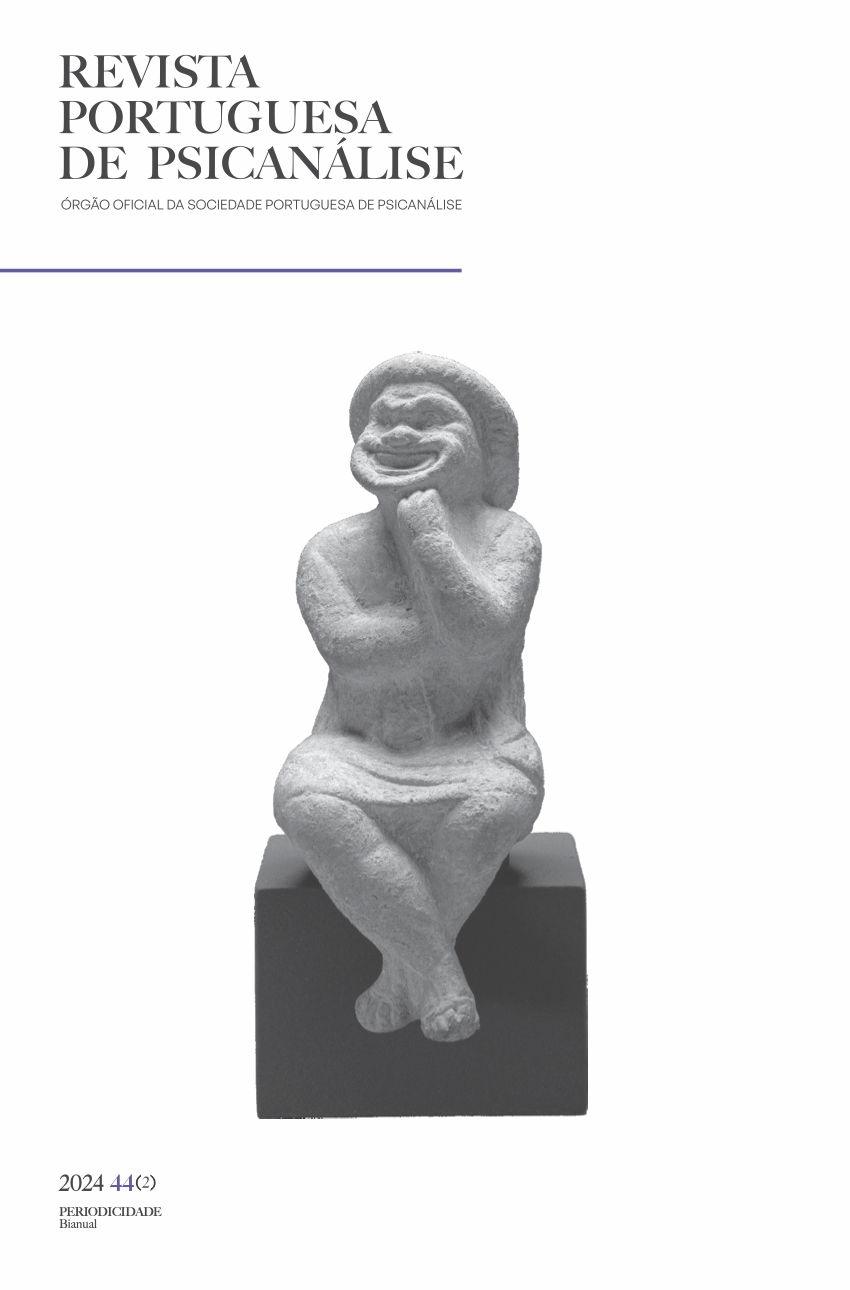Masculinidad y sus Placeres

Resumen
El autor discute la evolución de las conceptualizaciones de la masculinidad en la teoría psicoanalítica, entre las opiniones monoteístas, fálicas-narcisistas y seminales, diferenciándolas e interconectandolas. En segundo lugar, el autor reflexiona sobre las expresiones socioculturales y clínicas de la identidad masculina contemporánea. Finalmente, los aspectos específicos de la experiencia de placer asociado con la masculinidad, su organización psíquica y manifestaciones específicas se exploran en profundidad.
Biografía del autor/a
Rui Aragão Oliveira
Presidente da Comissão de Ensino e Psicanalista titular com funções didáticas da Soc. Portuguesa de Psicanálise
Citas
- Aragão Oliveira, R. (2020) The father and the paternal function in the psychoanalytical process: theoretical and clinical issues. American Journal Psychoanalysis, 80, 309–330. https://doi.org/10.1057/s11231-020-09262-y
- Aragão Oliveira, R. (2023). Livro do Prazer – Reflexões Psicanalíticas. Taiga.
- Aragão Oliveira, R. (2024). From Struggle for Pleasure to Pleasures Struggling – Psychoanalytical Ideas on Pleasure. The American Journal of Psychoanalysis (no prelo).
- Birksted-Breen, D. (2016). The Work of Psychoanalysis: Sexuality, Time and the Psychoanalytic Mind. Routledge.
- Chasseguet-Smirgel, J. (1970). Female sexuality: New psychoanalytic views. Karnac Books. (Original publicado em 1964.)
- Davids, M. F. (2002). Fathers in the internal world: From boy to man to father. Em J. Trowell & A. Etchegoyen (Eds.), The Importance of Fathers: A Psychoanalytical Re-evaluation (pp. 67–92). Brunner-Routledge
- Diamond, M. J. (2004). The shaping of masculinity: Revisioning boys turning away from their mothers to construct male gender identity. The International Journal of Psychoanalysis, 85(2), 359–379.
- Diamond, M. J. (2009). Masculinity and its discontents: Making room for the ‘‘mother’’ inside the male – An essential achievement for healthy male gender identity. Em B. Reis & R. Grossmark (Eds.), Heterosexual Masculinities: Contemporary Perspectives from Psychoanalytic Gender Theory (pp. 23–54). Routledge.
- Diamond, M. J. (2013). Evolving perspectives on masculinity and its discontents: reworking the internal phallic and genital positions. Em E. P. Mari & F. Thomson-Salo (Eds.), Masculine and Feminine Today (pp. 1–24). Karnac Books.
- Diamond, M. J. (2015). The Elusiveness of Masculinity: Primordial Vulnerability, Lack, and the Challenges of Male Development. The Psychoanalytic Quarterly, 84(1), 47–102. https://doi.org/10.1002/j.2167-4086.2015.00003.x
- Diamond, M. J. (2021). Masculinity and Its Discontents: The Male Psyche and the Inherent Tensions of Maturing Manhood. Routledge.
- Figlio, K. (2024). Rethinking the Psychoanalysis of Masculinity: From Toxic to Seminal. Routledge. https://doi.org/10.4324/9781003455790
- Freud, S. (2001). The question of lay analysis. Em The Standard Edition of the Complete Psychological Works of Sigmund Freud, vol. 20 (pp. 179–250). Hogarth Press. (Original publicado em 1926.)
- Greenson, R. (1968). Disidentifying from mother: Its special importance for the boy. The International Journal of Psychoanalysis, 49, 370–374.
- McCall, R. (2019). Psychoanalysis and feminism: a modern perspective. Em David Morgan (Ed.), The Unconscious in Social and Political life. The political mind (pp. 157–172). Editions Phoenix.
- Ogden, T. (1992). The Primitive Edge of Experience. Karnac Books. (Original publicado em 1989.)
- Prado, M. (1976). Feminism and women analyst. The American Journal of Psychoanalysis, 36(1), 79–84.